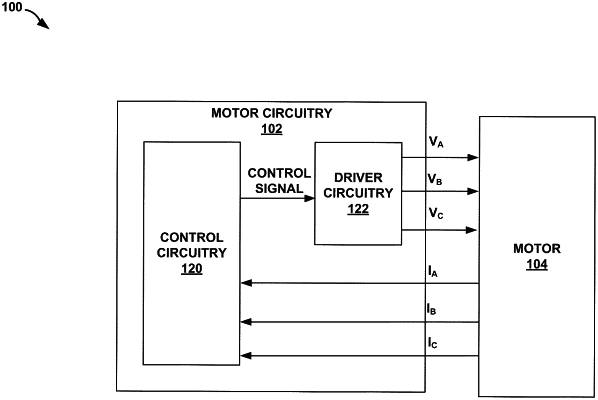| CPC H02P 21/32 (2016.02) [H02P 21/18 (2016.02); H02P 2203/03 (2013.01)] | 22 Claims |

|
1. A circuit for controlling a motor, the circuit comprising control circuitry configured to:
generate a control signal for controlling the motor based on a first angle of stator voltage vector for the motor, wherein the first angle of stator voltage vector is associated with a first sector of a plurality of sectors of a cycle for the motor;
identify, from a first phase current signal indicating current flow at a first phase of the motor, a second phase current signal indicating current flow at a second phase of the motor, and a third phase current signal indicating current flow at a third phase of the motor, a first selected phase current signal indicating a current direction and a second selected phase current signal indicating the current direction of the first selected phase current signal, wherein the current direction comprises a positive current direction indicating that phase current is greater than zero or a negative current direction indicating that phase current is less than zero;
determine whether a commutation event has occurred for the first sector based on the first selected phase current signal and the second selected phase current signal;
in response to a determination that the commutation event has occurred for the first sector, determine that the motor is operating in a second sector of the plurality of sectors of the cycle for the motor;
determine a second angle of stator voltage vector for the motor based on the determination that the motor is operating in the second sector; and
generate the control signal based on the second angle of stator voltage vector for the motor.
|